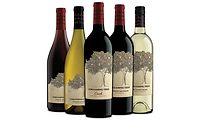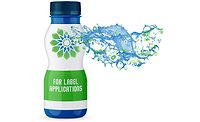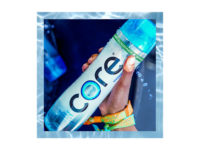Packaging Materials
Premiumization, sustainability influencing labeling materials for beverages
Special effects enhance experience, engagement with consumers

Image courtesy of Taub Family Selections
Once a staple in pediatric dentist and doctor’s office lobbies, the “Where’s Waldo” puzzle books challenge readers to locate the fictional Waldo in a variety of scenes that featured dozens of people, objects and even animals. Although today’s beverage shelves might not be as crowded as a “Where’s Waldo” illustration, SKU proliferation has made it more challenging for beverage brands to stand out on grocery shelves. To help combat this problem, beverage-makers are ensuring their label designs draw attention to their portfolio.
“The beverage shelves are saturated with products competing for the same consumers. As a brand’s first impression, the labels and packaging provide an opportunity for differentiation among competitors,” says Kimberly Flynn, marketing project manager at MCC Label, Cincinnati. “At MCC, our customers are choosing materials that complement their graphic design, sustainable goals, and promotional engagement campaigns. Some of the materials we’re using more frequently include specialty inks that react to changing light and temperature, interactive packaging and codes that comes alive with smartphones, and recyclable substrates that pair with the container for a completely sustainable package.”
Vanita Marzette, senior product manager for Avery Dennison’s label and packaging materials for wine and spirits, highlights how the proliferation of premium products across the beverage alcohol categories have influenced label designs and materials.
“In alcoholic beverages, wine and spirits specifically, premiumization continues to be a strong trend,” she says. “There are more and more brands entering into this space and they want to stand out from the crowd. They are using thicker 70-plus pound material, enhancing designs with embossing patterns, foiling and other printing techniques. They are also using unique materials like velvet, cotton and hemp to enhance their look and brand story.”
Marzette adds that beer, particularly craft beer, are using labels to stand out from the crowd.
“The packaging has more color and the brands are trying to tell their story through colorful graphics,” she details. “Beer in cans are also bringing their story to life with more colorful designs on film and shrink papers.”

Image courtesy of Avery Dennison
Premium ‘effects’
To help support the growing premium beverage market, suppliers are providing an array of special effect solutions that can be applied to label designs.
“Metallicized films and inks that support a rich, distinctive look that holds the eye can be effective at supporting brands using traditional ingredients and processes to create the highest quality spirits,” Marzette explains.
Embossing, spot varnishing as well as holographic, iridescent and glitter effects are other special effects that Marzette has identified as popular solutions for beverage labels.
MCC’s Flynn explains that the label solutions provider offers a variety of customizations for the diverse needs of the beverage market.
“Our DuraSculpt solution is an embossing technique used on clear, white and metallized films,” she says. “This technique is built to hold the embossed pattern when exposed to moisture, such as a cooler. We have seen interest in using high-build embellishments such as resin to give a ‘wax-like’ look and texture. Foil stamping and cold foil applications are popular for adding elegance and shine.”
She also highlights tactile solutions like soft touch or matte coatings, which can deliver an added level of sophistication.
“When a consumer picks up a product, the likelihood of a purchase increases substantially, so these solutions for attracting a tactile experience with consumers are highly valuable,” Flynn says.
Functional inks are another opportunity for beverage brands to connect with consumers.
“We have inks that react with exposure to sunlight, revealing hidden text and graphics,” Flynn notes. “We also have inks that reveal messages and graphics with black lights and glow in the dark.”
Whichever special effect that brand owners opt to employ, Flynn highlights the value these can deliver to beverage-makers.
“Brands should consider every opportunity to solicit consumer engagement with a product,” she says. “Eighty-two percent of consumers will purchase a product if it catches their eye and they hold the product in hand.”
Sustainable drive
Although premiumization might be driving a variety of beverage packaging trends, experts note that sustainability measures also are influencing labeling materials.
“Due to changing regulations and consumers demanding that the brands they buy are kinder to the environment/sustainable we see the demand for label materials with recycled content or labels that enable plastic recycling,” Avery Dennison’s Marzette says. “There has also been a rise in requests for post-consumer/industrial waste material, organic and compostable materials. Recycling has increased and this has led to technology that allow the materials to remove cleanly during the recycling process.”
MCC’s Flynn also notes how sustainability has influenced the company’s portfolio as well as partnerships.
“Most of our customers have expressed some form of a sustainability plan for their company, with labels and packaging being a primary focus for change,” she explains. “With this growing demand for sustainable label materials, MCC has been building partnerships with key national and global organizations to develop and test alternative material constructions, capable of meeting recyclability standards.
“In particular, we’re seeing growing interest in our recycLABEL pressure-sensitive substrate with a releasable adhesive,” Flynn continues. “It meets APR and EPBP standards and works on PET containers for a completely recyclable package.”
But whatever factor is motivating beverage-makers’ label choices, experts note the importance of considering the totality of the beverages lifecycle when deciding which materials to use.
“[W]hat is the quality of materials that you want to start with that will tell the brand’s story ― textured papers to give an old craft look, gloss papers, uncoated, or specialty papers providing a unique look like stone paper, velvet or leather,” Avery Dennison’s Marzette explains. “Understand where the beverage will go, [for example,] labels that can stand up to ice buckets, refrigerators, freezers and humid conditions.”
MCC’s Flynn echoes similar sentiments. “For beverages, one of the first considerations is how will that container be stored? If it’s likely to sit in a cooler with ice, brands should consider materials that will withstand cold and wet environments for long periods of time,” she says. “Wet strength papers or films might be the best choice. Also, if the label will be exposed to the sun, certain materials are better to withstand UV exposure.”
Flynn also notes the importance of considering the graphics as well as any special coatings, varnishes, and embellishments that a brand intends to use as these will influence the substrate and materials which will work best within the label.
But of most importance, is engaging with technical experts during the early brainstorming process, Flynn explains.
“This is critical when any of our customers are considering label changes ― whether it’s a substantial material change or a simple graphics change,” she says. “Having us at the table ensures that we build the right recipe of materials to get the highest quality product through the press and applied to your container in the most efficient way possible.”
As beverage-makers look to stand out from the crowd, label material suppliers are offering a bevy of solutions that will support them.
Looking for a reprint of this article?
From high-res PDFs to custom plaques, order your copy today!








